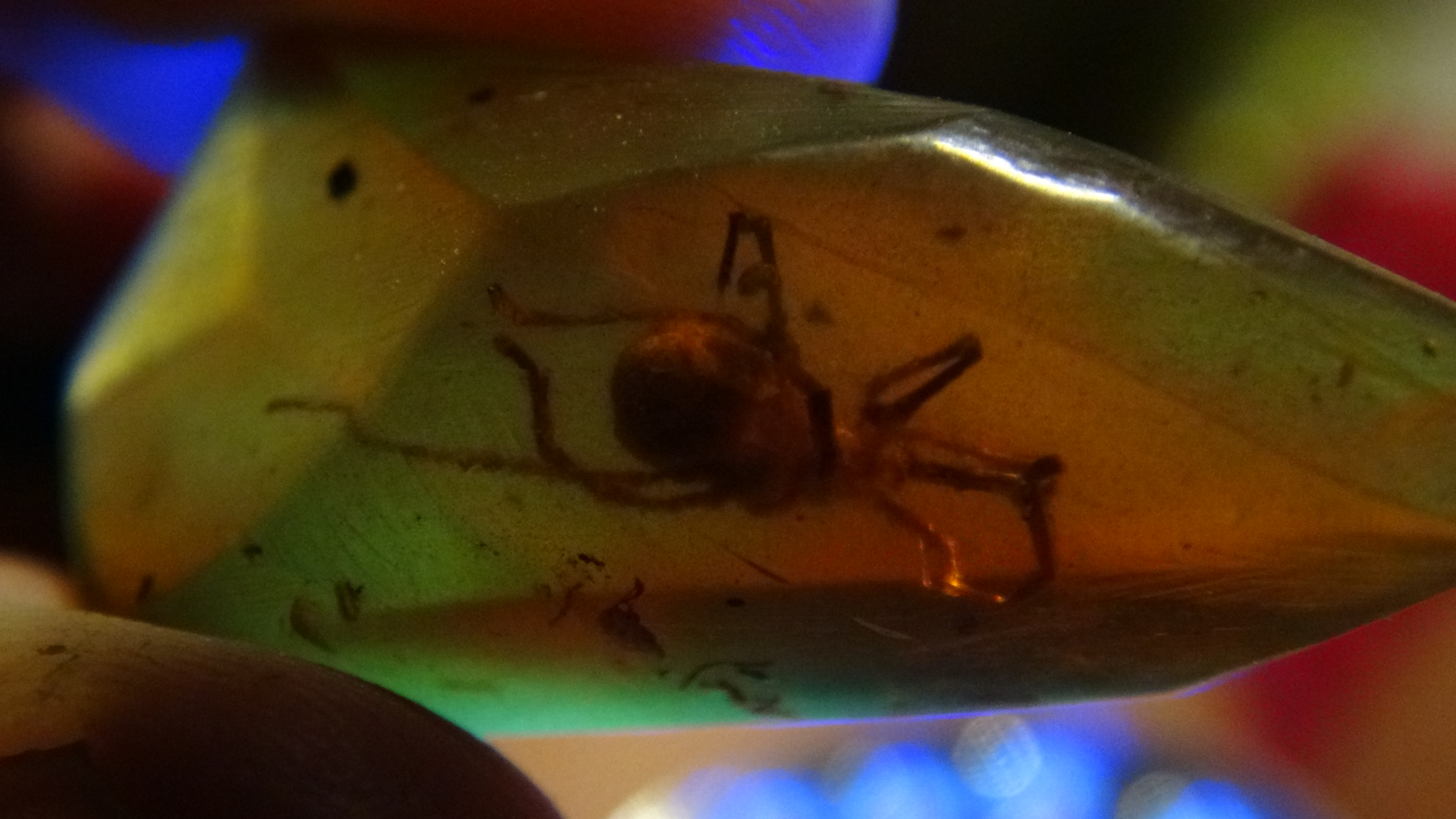This tick in amber is unusually large. Ticks preserved in amber have provided valuable insights into the ancient history of these arachnids and their interactions with other organisms. Amber is fossilized tree resin, and when it oozes and hardens, it can entrap small organisms, including ticks, preserving them over millions of years. Amber deposits containing ticks offer scientists a glimpse into the morphology, behavior, and ecological relationships of these ancient arachnids. By studying well-preserved specimens, researchers can learn about the tick's evolution, their host preferences, and even the pathogens they might have carried in the past. One of the most famous examples of ticks preserved in amber is the discovery of a Cretaceous tick found in amber from Myanmar. This tick, named Deinocroton draculi (meaning "Dracula's terrible tick"), was described in 2017. It is estimated to be around 99 million years old and represents one of the oldest tick specimens ever found. Fossilized ticks in amber also provide evidence of the parasites and pathogens that might have existed in ancient ecosystems. These specimens can potentially harbor remnants of blood meals from their hosts or provide clues about the diseases that afflicted organisms in the distant past. In summary, ticks preserved in amber are valuable fossils that contribute to our understanding of the evolutionary history and ecological interactions of these arachnids. They provide a unique window into the ancient world and aid in unraveling the mysteries of these fascinating parasites and their role in past ecosystems.

Poinar, G.O.Jr. 2014 (on-line). Rickettsial-like cells in the Cretaceous tick, Cornupalpatum burmanicum (Ixodida: Ixodidae). Cretaceous Research, 52, 623-627.
Poinar, G.O.Jr. & Buckley, R. 2008a. Compluriscutula vetulum (Acari: Ixodida: Ixodidae), a new genus and species of hard tick from Lower Cretaceous Burmese amber. Proceedings of the Entomological Society of Washington, 110(2), 445-450.
Poinar G.O.Jr. & Brown, A.E. 2003a. A new genus of hard ticks in Cretaceous Burmese amber (Acari: Ixodida: Ixodidae). Systematic Parasitology, 54(3), 199-205.
Fain, A. & Bochkov, A.V. 2001. A review of the genus Cheyletus LATREILLE, 1776 (Acari: Cheyletidae). Bulletin de l’Institut Royal des Sciences Naturelles de Belgique, 71, 83-114.
Dunlop, J.A. & Oliveira Bernardi, L.F. de. 2014. An opilioacarid mite in Cretaceous Burmese amber. Naturwissenschaften, 101, 759-763.
Khaustov, A.A. & Poinar, G.O.Jr. 2010 (on-line). Protoresinacarus brevipedis gen. n., sp. n. from Early Cretaceous Burmese amber: the first fossil record of mites of the Family Resinacaridae (Acari: Heterostigmata: Pyemotoidea). Historical Biology, 23 (2-3), 219-222.



